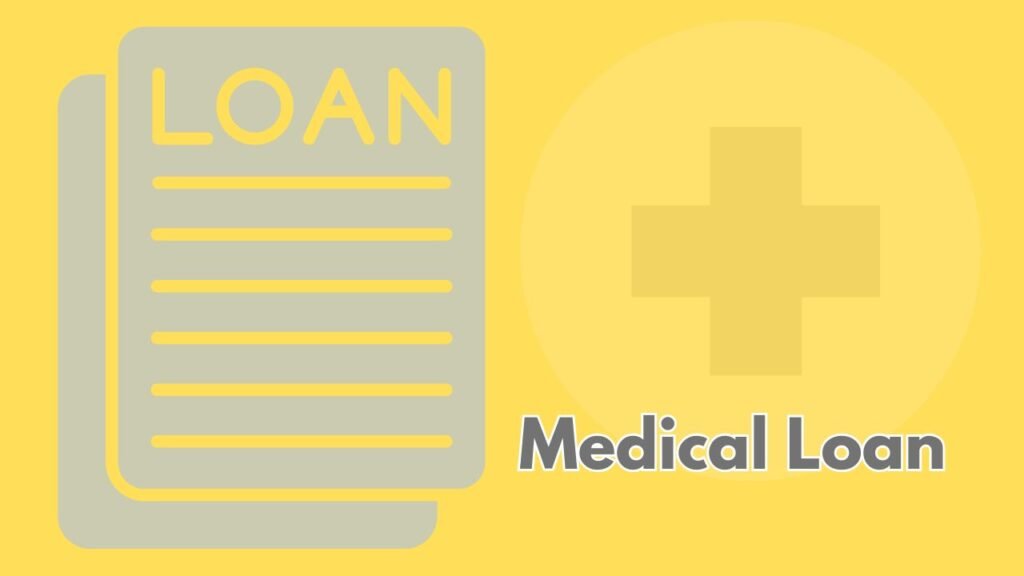Medical emergencies are unpredictable. Whether it’s a sudden surgery, an accident, or a critical illness, the emotional toll is often compounded by the financial burden. Hospital bills can pile up quickly—especially if you don’t have comprehensive insurance coverage or enough savings to fall back on. In such moments, a medical emergency loan can serve as a financial lifeline.
In this post, we’ll explore what medical emergency loans are, how they work, their pros and cons, and how to choose the right one if you’re facing an unexpected health crisis.
Understanding the Problem: The Rising Cost of Healthcare
The cost of healthcare has been on the rise globally. In countries like the United States, India, and even parts of Europe, a single hospital stay can run into thousands—or even tens of thousands—of dollars.
Common costs include:
- Emergency room visits
- ICU stays
- Diagnostic tests (MRI, CT scans, bloodwork)
- Surgeries
- Post-operative care and medication
- Specialist consultations
Even with insurance, deductibles and co-pays can leave patients with significant out-of-pocket expenses. For those without insurance, the financial hit can be devastating.
What Is a Medical Emergency Loan?
A medical emergency loan is a type of personal loan specifically designed to cover urgent medical expenses. These loans are usually unsecured, meaning you don’t need to put up collateral like property or gold to get approved.
They can be used for:
- Hospital admissions
- Surgeries
- Ambulance services
- Medicines and medical devices
- Post-discharge therapies or rehabilitation
These loans are typically disbursed quickly—sometimes within 24 to 48 hours—making them ideal during medical emergencies when time is of the essence.
Key Features of Medical Emergency Loans
Here are some common features of these loans:
1. Fast Approval & Disbursal
Most lenders offer quick processing, especially if you apply online and meet the eligibility criteria.
2. Flexible Loan Amounts
You can borrow anywhere from a few thousand to several lakhs (or thousands of dollars), depending on your credit profile and lender.
3. Short to Medium Repayment Tenure
Tenures usually range from 6 months to 5 years, allowing you to spread out the repayment.
4. No Collateral Required
These are unsecured loans, so you don’t need to risk your assets.
5. Minimal Documentation
Basic KYC documents, income proof, and medical bills are typically required.
Who Should Consider a Medical Emergency Loan?
A medical loan might be suitable for:
- Individuals without health insurance
- People whose insurance doesn’t fully cover the treatment
- Those facing a cash crunch despite having some coverage
- Families needing urgent funds while waiting for insurance claims
Pros and Cons of Medical Emergency Loans
Pros:
- Quick access to funds during critical times
- No need to liquidate assets or dip into retirement savings
- No collateral required
- Improves treatment access, especially in private hospitals
Cons:
- High interest rates (especially for people with poor credit)
- EMIs add financial pressure during recovery
- Debt risk if repayment is delayed or defaulted
How to Apply for a Medical Emergency Loan
Here’s a step-by-step process:
1. Assess the Medical Need
Get an estimate from your hospital or doctor about how much the treatment will cost.
2. Compare Lenders
Research banks, NBFCs (Non-Banking Financial Companies), and digital loan platforms. Compare:
- Interest rates
- Processing fees
- Repayment flexibility
- Customer reviews
3. Check Eligibility
Common criteria include:
- Age (usually 21–60 years)
- Stable income (salary or self-employed)
- Decent credit score (650+ preferred)
4. Prepare Documentation
Usually, lenders ask for:
- Identity proof (Aadhaar, passport, etc.)
- Address proof
- Income proof (salary slips, bank statements)
- Medical documents or treatment estimate
5. Submit the Application
Apply online or visit a branch. Many platforms now offer paperless processing.
6. Disbursal
Once approved, funds are credited to your account—sometimes on the same day.
Alternative Funding Options to Explore
If a personal loan isn’t right for you, here are a few alternatives:
- Health insurance claim advances (some insurers offer this while your claim is processed)
- Employer salary advance programs
- NGOs or health-focused charities
- Crowdfunding platforms like GoFundMe or Ketto
- Medical credit cards or interest-free EMI cards for hospital expenses
Tips to Manage Hospital Bills Smarter
- Negotiate with the hospital – Ask for itemized bills and inquire about discounts or charity care.
- Use insurance efficiently – Always understand what your policy covers and how to file claims quickly.
- Look for zero-interest EMI options – Some hospitals have tie-ups with fintechs offering interest-free installment payments.
- Avoid payday loans or loan sharks – These come with extremely high interest and can lead to a cycle of debt.
Final Thoughts
A medical emergency can shake your world—but having financial options can help ease the burden. Medical emergency loans offer a fast and flexible way to pay hospital bills without delaying treatment. However, it’s essential to borrow responsibly and understand the repayment terms fully.
Always explore insurance, ask your hospital about payment plans, and compare lenders to find the best deal. In critical times, making smart financial decisions can make all the difference—not just for your health, but for your future peace of mind.






